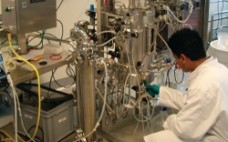Continuing the theme of this occasional series, we examine the role of manufacturing in the supply chain in terms of what is required to deliver affordable medicines to patients. The industry has debated the relevance of manufacturing costs in the overall big picture (1). Rising manufacturing costs as a proportion of the overall selling price coupled with increased competitive pressures creates a strong drive to reduce manufacturing costs. However, cost of goods (CoG) is not the only strategic…
Saturday, October 1, 2011 Daily Archives
A Best-Practices Exchange with Solutions to Common Problems and Techniques for Next-Generation Products Formulation Strategies for Protein Therapeutics
Now in its 11th year, IBC’s Formulation Strategies for Protein Therapeutics is a must-attend annual conference for formulation, delivery, and analytical development scientists from biotherapeutic development organizations around the world. The 28 case studies to be presented at this year’s conference were chosen to offer solutions to the most pressing day-to-day challenges in formulation development for therapeutic proteins. Additional presentations address cutting-edge protein science from leading academics and include briefings on strategic issues of importance to this important field: Solutions…
Recovery and Purification
A downstream process that leverages the advantages of innovative technologies such as disposables, in-line monitoring, and high-throughput systems as well as the robust methods for its harvest and purification steps can significantly improve in a company’s time (and cost) to clinic or commercialization. The 2011 BioProcess International Conference and Exhibition provides forward-thinking presentations that can help you define, characterize, and simplify your downstream design space. Process Development Many biomanufacturers have already experienced the advantages of high-throughput…
Cell Culture
After over three decades of progress, cell culture bioprocesses in the biopharmaceutical industry continue to evolve. From early laboratory culture methods to vaccine production in the mid-20th century, the first biopharmaceutical companies had a century of basic understanding to build on when they developed the first recombinant expression systems. Since those first efforts in the 1980s, a succession of cell culture biologists and engineers have improved processes using a series of products that have been increasingly specified for their use.…
Product Life-Cycle Management
Even before the advent of biosimilar products, biopharmaceutical products faced life-cycle concerns. The discovery–development–licensure process is just the beginning. Drug sponsors hope each new product will enjoy decades of relevance and generate millions of dollars in sales. But “me-too” products will come along, process technologies will change, and patents will expire. Even product innovators have to think about comparablity. Out-of specification results can signal problems that have their roots in raw material choices and sources, equipment deviations, analytical…
Manufacturing Management and Analytical Strategies
The need to streamline costs, shorten development timelines, and stretch valuable resources is driving biomanufacturers to seek innovative ways of enhancing manufacturing efficiency. Analytical methods for process development and validation as well as use of production technologies such as disposables and supply chain logistics can help companies establish facility flexibility. Effective management of a good manufacturing practice (GMP) facility requires a keen eye on all those factors. The Enhancing Manufacturing and Development Efficiency track of the 2011 BioProcess…
From The Organizers
Welcome to the BioProcess International Conference and Exhibition, your one-stop industry resource for driving down costs; improving quality; achieving rapid, robust, and resilient process development and manufacturing. This week you will have an opportunity to explore challenges, uncover solutions, and develop opportunities at the largest and most highly respected event solely dedicated to biopharmaceutical manufacturing. This year, the conference features more than 50 presentations with new, previously unpublished data as well as many more to choose from, including…
From The Editor
Not long ago I assembled a few current and former coworkers to meet with a young woman who is contemplating a career in journalism. Part of that visit involved comparing experiences of those who had been in the field for many years with those who had finished their formal education only a few years ago. We wondered whether the field still welcomes newcomers with degrees other than in journalism; or whether publishers now insist on that specific…
Intensified Manufacturing: Economic Models Comparing Steel, Single-Use and Concentrated Process Options
Refine Technology, LLC, in conjunction with Biopharm Services, developed two economic models to examine the cost of goods and capital requirements of cell culture production facilities configured based on different production scenarios, including variables such as:
• Amount of product required
• Vessel sizes
• Number and type of vessels (stainless steel vs. single use)
• Product titer
• Seed train
• Upstream and downstream requirements
In this educational webcast, John Bonham-Carter, Vice President of Sales and Business Development at Refine Technology, analyzes the effect of these variables in relation to operating mode, continuous culture (perfusion) versus traditional fed batch. Join John as he presents results and discussion for facilities producing 50 and 500Kg of protein per year.

